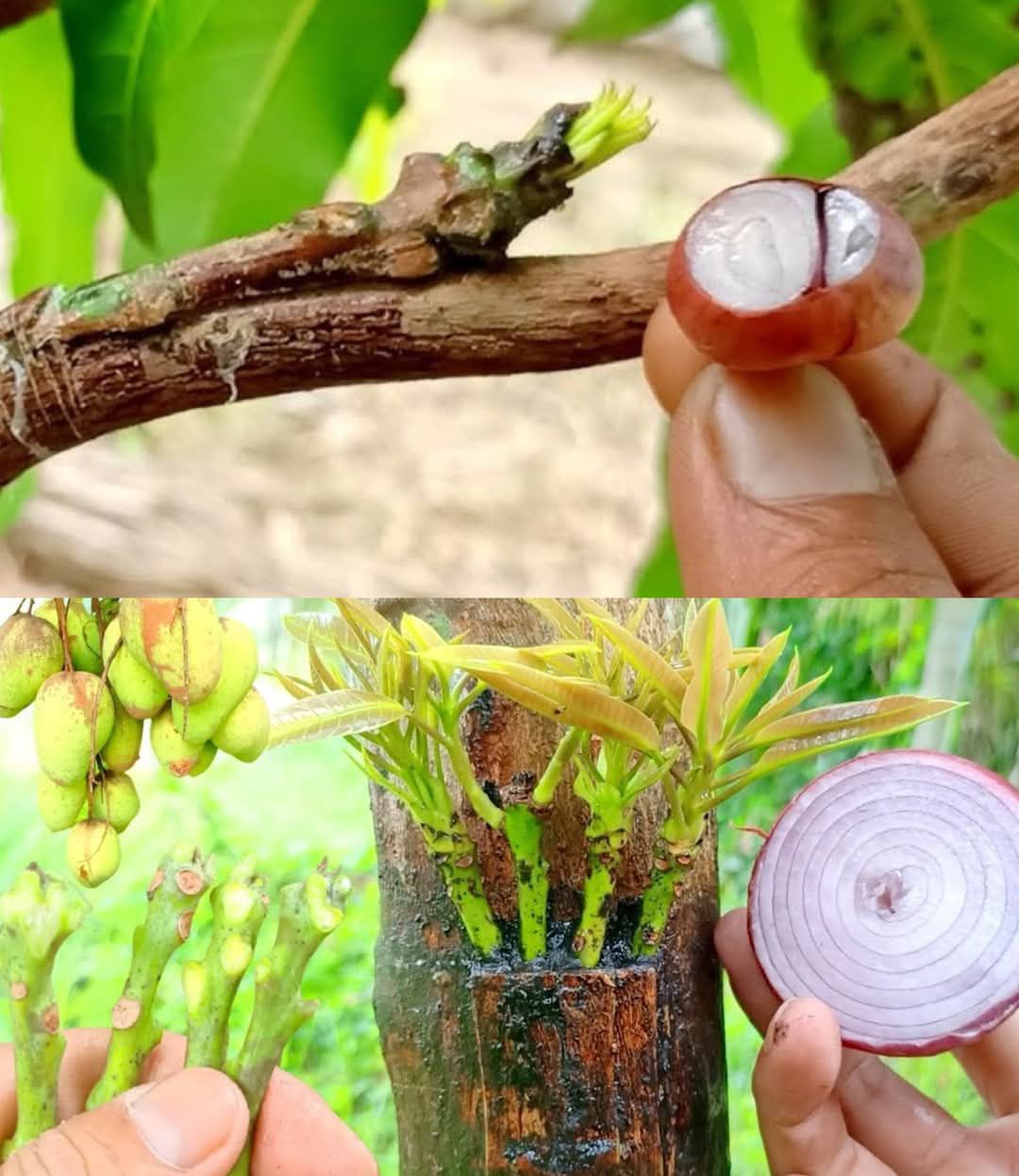Most Powerful Natural Hormone Onion for Grafting Mango Trees | Best Natural Hormone
When it comes to grafting mango trees, using the right rooting hormone is crucial for a successful graft. While there are many chemical products available, onion stands out as one of the most powerful natural hormones to encourage successful grafting. Onions are rich in sulfur compounds and growth-promoting substances, making them an excellent natural alternative to synthetic rooting hormones. In this article, we will explore how to use onion as a natural hormone for grafting mango trees and why it’s considered the best natural hormone.
Why Use Onion for Grafting Mango Trees?
Onions are packed with sulfur, phytochemicals, and natural enzymes that stimulate root growth and tissue regeneration, essential for grafting success. These natural compounds help the grafting site heal quickly, allowing the mango tree scion (the top part of the tree that you want to propagate) to bond seamlessly with the rootstock (the tree that will provide the roots). Using onion as a grafting hormone is a traditional method used by gardeners who prefer natural solutions over chemical alternatives.
Preparing Onion for Grafting Mango Trees
Before using the onion as a natural hormone for grafting, it needs to be prepared properly to maximize its effectiveness. Follow these steps:
Step 1: Select a Fresh Onion
Choose a fresh, healthy onion with no signs of rot or damage. A large, mature onion is ideal, as it has a higher concentration of nutrients.
Step 2: Prepare the Onion Paste
To create the natural hormone, peel the onion and finely chop or blend it. You can also mash it into a paste. The key is to extract the juices and natural compounds from the onion that will encourage the root development and help the scion attach to the rootstock.
Step 3: Soak the Scion in Onion Paste
Once the onion paste is ready, dip the cut end of the mango scion into the mixture. Allow the scion to soak for several minutes to absorb the onion’s natural hormones. The onion’s sulfur and enzymes will stimulate the formation of rooting cells at the grafting site, enhancing the success rate of the graft.
Grafting Mango Trees with Onion Hormone
Once the mango scion has been treated with the onion mixture, proceed with the grafting process. Here are the general steps for grafting mango trees:
Step 1: Prepare the Rootstock
Select a healthy mango rootstock, typically a young mango tree or a mature tree with a strong root system. Cut the top of the rootstock at a slight angle to create a clean surface for the graft.
Step 2: Make the Graft
Carefully make a matching cut on the mango scion that will fit snugly onto the rootstock. The cuts should be made at the same angle and ensure that the cambium layers (the green layer beneath the bark) of both the scion and rootstock are aligned.
Step 3: Join the Scion and Rootstock
Place the scion onto the rootstock, ensuring that the cambium layers touch. Secure the graft with grafting tape or a special grafting clip to hold the scion in place. The onion’s natural hormones will help the tissues heal and bond more quickly.
Post-Grafting Care
After grafting, it’s crucial to keep the grafted mango tree in the right environment to ensure successful grafting. Here are some tips for post-grafting care:
Humidity: Cover the grafted area with a plastic bag or place it in a humid environment to prevent the cutting from drying out.
Watering: Water the mango tree lightly, ensuring the soil remains moist but not soggy.
Temperature: Keep the grafted tree in a warm spot with indirect sunlight. Ideal temperatures for grafting mango trees are between 70-85°F (21-29°C).
Monitor the Graft: Check the grafting area for signs of healing. After 2 to 3 weeks, the graft should start showing signs of successful union, and you may see new growth from the scion.
Benefits of Using Onion for Grafting Mango Trees
Using onion as a natural hormone for grafting mango trees offers several benefits:
Improved Root Development: The sulfur compounds in onions stimulate the growth of healthy roots at the grafting site.
Faster Healing: The enzymes in onions help accelerate the healing process of the grafted area, allowing the scion and rootstock to bond quickly.
Chemical-Free: Onion is a natural and safe alternative to chemical rooting hormones, making it ideal for organic gardening.
Increased Grafting Success: Onions have been shown to significantly improve the success rate of grafting in mango trees and other plants.
Conclusion
Using onion as a natural hormone for grafting mango trees is one of the most effective and eco-friendly techniques available. Rich in sulfur, growth hormones, and enzymes, onions help to promote root growth, speed up the healing process, and improve grafting success. By following the steps outlined above, you can easily graft your mango trees using this powerful natural hormone, resulting in healthy, thriving mango plants.
